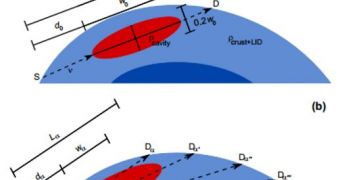Discovering neutrino oscillations was one of the most significant discoveries made in particle physics over the past few years. Now, a team of physicists proposes that scientists use this data to conduct studies of Earth's density at various locations.
Experts currently accept the existence of three types, or flavors, of neutrinos: the electron, tau and muon neutrinos. An important discovery was that the electrically-neutral, elementary particles could switch from one flavor to another as they traveled through space, via a process called oscillation.
In new studies, experts determined that neutrino oscillation basically depends not only on the distance the weakly-interacting particle travels through space, but also on the type of matter it encounters as it travels, Technology Review reports.
This was determined in studies conducted on solar neutrinos. Experts were expecting to see one type of the small particles, and saw another one instead. The discovery is important because it eventually led to the discovery of the third neutrino flavor, and the proposal of a fourth.
These discoveries have some important practical applications, scientists at the Pontifical Catholic University of Peru, in Lima, explain. Team leader Carlos Arguelles says that neutrino oscillations may also be influenced by our planet's density, as the particles travel through Earth.
If that is the case, then wouldn't a beam of neutrinos injected in the ground at one location carry with it data of the inner planet's density as it exists through the crust on the other side of Earth? The team believes that the answer to that question is yes.
What the group is proposing is essentially a way of X-raying the entire planet. They are not the first to propose this is possible, but their study is the first one to suggest the minimum size and shape a cavity would have to have inside the Earth, in order for it to become visible for a neutrino “scanner.”
They say that a potential cavity would have to have a diameter of at least 200 kilometers (124.2 miles) in order to become visible. Neutrinos would be able to detect the hole only if it's filled with either water, or iron-based minerals. The technique could also detect charge accumulations in the deep.
Details of the research paper, entitled “Searching For Cavities Of Various Densities In The Earth’s Crust With A Low-Energy ν¯e β-Beam,” were published online in the journal arXiv.

 14 DAY TRIAL //
14 DAY TRIAL //